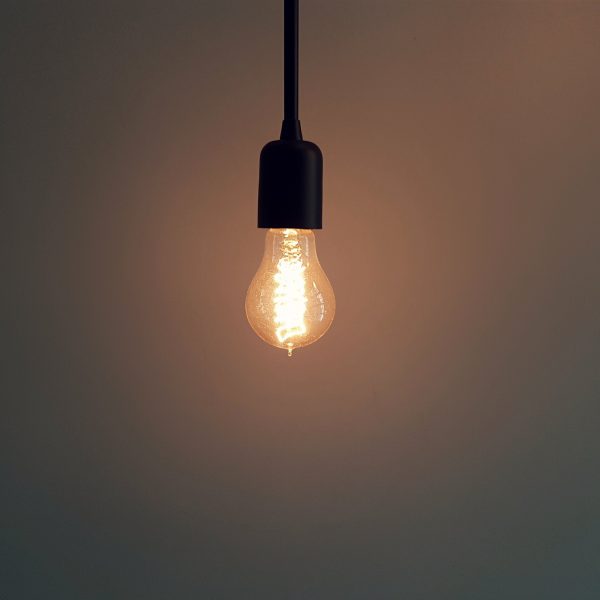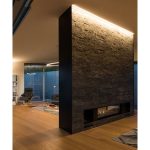Contents
Introduction to Fluorescent Lighting
The Basics of Fluorescent Lights
Fluorescent lighting vs led! Fluorescent lights have been illuminating spaces for over a century. These lights are known for their energy-saving capabilities and longevity compared to incandescent bulbs. Commonly found in tubes, fluorescent lights can fill large areas with light efficiently and are often used in offices, schools, and warehouses.

How Fluorescent Lights Work
A complex process turns electricity into visible light in fluorescent bulbs. Inside the bulb, an electric charge passes through mercury vapor. This produces ultraviolet light that then interacts with a fluorescent coating inside the tube to create visible light. These lights require a ballast to regulate the current and an electrode to start the initial gas discharge.
Common Uses of Fluorescent Lighting
Fluorescent lights are versatile and find uses in a variety of settings. They’re installed in large commercial spaces to spread a wide area of light. You will find them lighting up warehouses, commercial buildings, and schools. In residential settings, CFLs, the compact version, often replace incandescent bulbs for energy savings.
Introduction to LED Lighting
LED lighting marks a significant shift in how we light our spaces. As we explore this illumination marvel, we see how it transcends traditional lighting methods, offering remarkable advantages.
Understanding LED Technology
LED, which stands for light emitting diode, operates on simple yet advanced technology. Electrical energy passes through a semiconductor, which then emits light — a process known as electroluminescence. LEDs vary in color temperature and brightness, adapting to different lighting needs.
Benefits of LED Lights Over Traditional Lighting
LED lights outshine traditional lighting in several ways. They consume less power, last longer, and have higher efficiency. Their instant on-off capability and dimmable features cater to versatile lighting requirements. With minimal heat emission and no UV radiation, they promote a safer and more comfortable environment.
LED Lighting Applications
The applicability of LEDs spans broad sectors. From illuminating homes and offices to lighting up streets and signage, LEDs are versatile. They also find their place in specialized areas, like fostering plant growth in agricultural setups and setting mood lighting in hospitality.
Comparing Efficiency: LED vs Fluorescent
Energy Efficiency and Consumption
In the battle of fluorescents versus LEDs, energy efficiency plays a pivotal role. LEDs pull ahead, converting up to 95% of energy into light, leaving only 5% as heat. This minimizes power consumption and promises hefty energy savings. Fluorescent lights, however, lag behind as they lose a greater portion of energy to heat.

Lifespan and Longevity
LEDs boast an impressive lifespan, frequently outlasting fluorescents with some bulbs shining for over 100,000 hours. This longevity surpasses fluorescent bulbs that typically range from 7,000 to 15,000 hours. Such endurance translates to fewer replacements and sustained brightness over time.
Maintenance and Replacement Costs
Lower maintenance defines LEDs, thanks to their prolonged life and sturdiness. This means less time and money spent on replacements and repairs. For fluorescents, the shorter lifespan and fragility can mean more frequent and costly upkeep. With LEDs, expect reduced long-term expenses.
Environmental Impact and Safety Concerns
In considering lighting options, environmental impact and safety are crucial. LEDs lead with eco-friendliness and safety benefits over fluorescents.
Hazardous Materials and Disposal
Fluorescent lights contain mercury, a toxic element requiring careful disposal. In contrast, LEDs lack hazardous substances, simplifying waste management and reducing environmental harm.
Heat Emissions and Workplace Safety
Fluorescent lights emit more heat, which can affect workplace comfort and safety. LEDs stay cool, posing fewer risks and contributing to a safer work environment.
Ultraviolet Emissions and Protection
Unlike fluorescents that emit UV light, posing risks to artworks and fabrics, LEDs do not generate UV emissions, protecting both objects and occupants from potential UV damage.
Economic Considerations
When selecting lighting solutions, the economic aspect is critical. Understanding the costs associated with LED and fluorescent lights can guide better fiscal decisions.
Upfront Costs vs Long-Term Savings
LED lights often have higher initial purchase prices compared to fluorescent lights. However, their long-term operational savings overshadow the initial expense. Users save on energy bills and replacement costs due to the extended lifespan of LEDs.
Return on Investment Analysis
An ROI analysis typically favors LED lighting. Despite the upfront cost, LED’s energy efficiency and longevity offer a quicker payoff. Businesses and homeowners alike can expect a return through decreased energy and maintenance expenses.
Impact on Utility Bills
LEDs exert a substantial influence on reducing utility bills. Their low power demand leads to noticeable savings on electricity costs. Fluorescents, while better than incandescents, cannot compete with the low energy consumption of LEDs.
Functional Advantages of LED Lighting
LED lighting offers key functional benefits that enhance their application across various settings.
Instant Illumination and Dimming Capabilities
LEDs provide light instantly when switched on, perfect for areas requiring immediate brightness. Their dimming feature also allows for versatile light control. This can save energy and improve comfort in any space.
Durability and Shock Resistance
LED lights are tough and less likely to break compared to fluorescent bulbs. They resist vibrations and shocks, making them ideal for high-traffic areas and industrial environments.
Flicker, Noise, and Light Quality
LEDs offer consistent light without flicker or noise. This results in a higher quality light, reducing eye strain and improving conditions for concentration and work.
Making the Switch to LED
Transitioning to LED lighting involves careful planning, assessment, and selection. Let’s explore the steps and considerations for a successful LED retrofit in your space.
Planning an LED Retrofit
To start an LED retrofit, evaluate your current lighting. Identify the types of bulbs in use and their locations. Consider the desired brightness and color temperature for each area. Then, look for LED replacements that match the light output and fit your fixtures. Also, check for rebates or incentives offered by utility providers or local governments that could offset costs.
Next, calculate the number of LEDs needed and the associated costs, including any installation fees. Plan for potential wiring changes if you’re upgrading from non-LED compatible fixtures. Consider phasing the retrofit to spread out costs over time.
Assessing the Cost-Benefit of LED Conversion
Weighing the cost against the benefits plays a crucial role in an LED conversion decision. Calculate upfront costs and compare them to long-term savings from reduced energy use and lower maintenance. Estimate the payback period, or how long it will take for the savings to cover the initial investment. Often, this period is shorter due to the high efficiency and longevity of LEDs.
Remember that LED lights use much less energy, resulting in lower utility bills. Factor in the environmental impact as well, since LED retrofits contribute to sustainability efforts by decreasing carbon emissions.

Recommendations for LED Lighting Selection
When selecting LED lights, prioritize quality and reliability. Choose products from reputable manufacturers that offer warranties. Match the lumens to the intensity of the light you need, rather than replacing watt for watt. Consider dimmable LEDs for areas where you want adjustable illumination.
If you’re unsure about which LEDs to pick, consult with a lighting professional. They can provide insights based on your specific needs and help create a lighting plan that optimizes comfort and efficiency.
By following these guidelines, you can ensure that your switch to LED lighting is successful, cost-effective, and enhances the quality of light in your environment.


